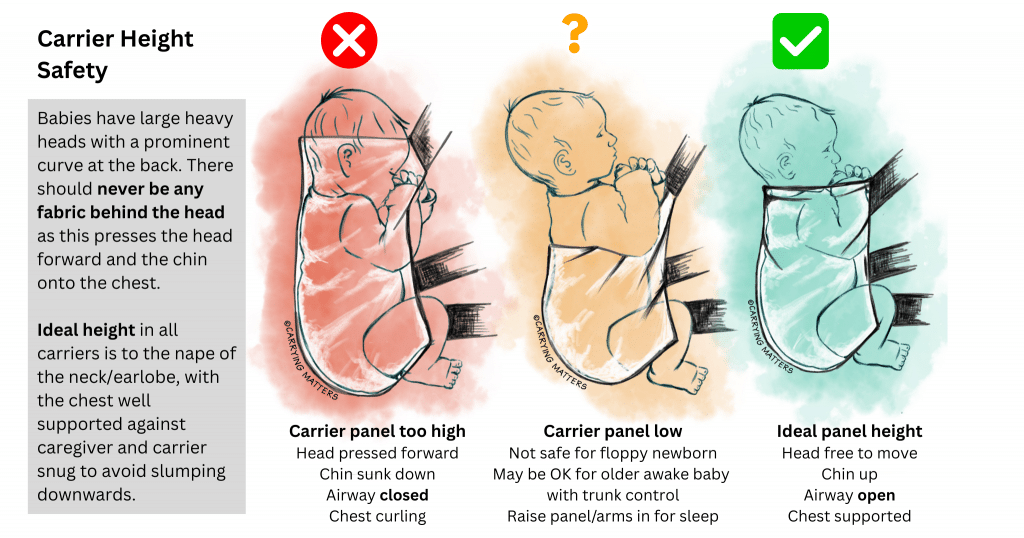I have met thousands of parents over the years, wanting help with choosing a sling. It’s fantastic to support them in their desire to carry their child close, with all the great things this will bring the whole family. For many, they can feel utterly overwhelmed by the huge range of options on offer (see here for a quick introduction to carrying, and here for a quick overview of the major types of sling).
Very often, they will ask me what I would recommend.. and this is a very hard question to answer, one that I usually respond to with more questions! Everyone’s choice of carrier is unique for themselves; and their initial choice will often change as they try things out.
Initially, when it comes to choosing a sling,
many people will look for a carrier that isn’t especially expensive, to see “if they get on with carrying.” Others will pick something that has been marketed by a mass-manufacturer in mainstream stores or at trade shows as being the best option available or will have picked something recommended on social media (please be aware of the fact that many of these influencers have no idea how to use a carrier well or safely), or will choose something for the specific features listed, such as the ability to carry a baby in multiple positions, or being described as “the best”. Some may have been given carriers by their friends from several years ago (often hardly used “as it just didn’t work for us”), or bagged some ultra-cheap ones on Ebay/Vinted.
This can sometimes lead to problems, as such carriers may not have been specifically designed to work with parent and child anatomy and can thus often be uncomfortable after only a short time. They may be worn too loose or baby may be too low, causing back pain from the strain of the carrying or the hunching that can ensue (as well as potentially posing an airway risk – also see here for more about carriers being too big). This can lead to a belief that that baby is too heavy or that the parent isn’t strong enough (neither is usually true!) and carrying journeys come to a premature end. At this point, those who want to make carrying work for them will often look for support from someone like me to find something that works. Of course, some parents will come straight to us right at the start!
A good carrier should be comfortable for both baby and parent. It should support baby safely, protecting their airway and allowing easy breathing, in just the same way as when you hold them upright on your chest in your arms.
A good carrier should hold baby in the anatomically appropriate spread-squat position that respects infant and child spine physiology, and it should be snug against parent/caregivers chest for weight distribution. Carrying in this fashion is safe, and is usually much more comfortable and allows longer duration of sling use than in-arms or in a poorly fitting carrier. (Do remember to build up your carrying muscles day by day. It is exercise and gets easier with repetition, just like training for a race.)
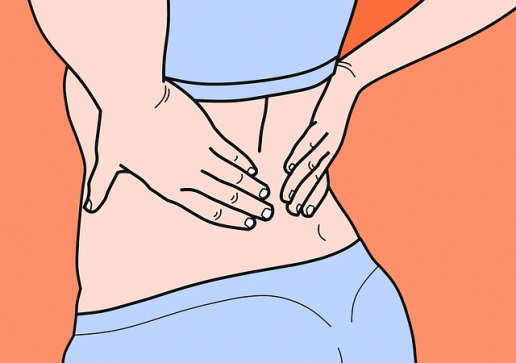
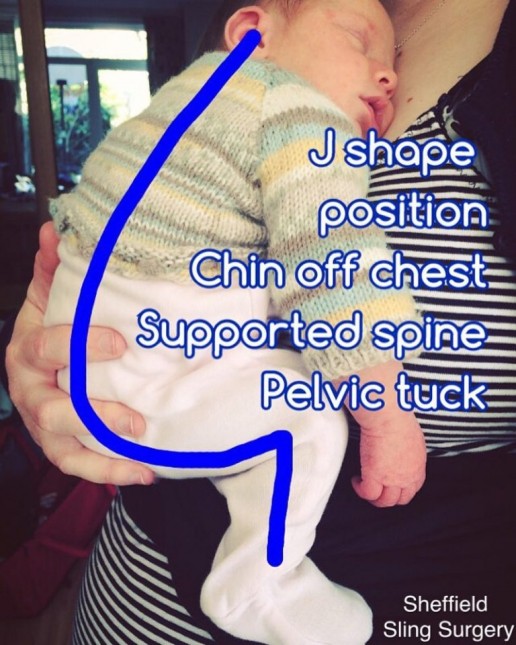
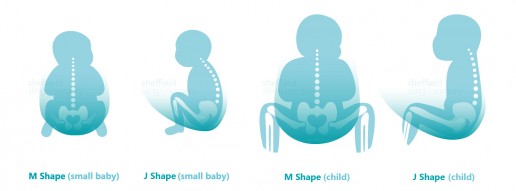
People end up choosing their main carrier for many different reasons – and each individual will have different priorities, which will lead to their own personal choice. When I am asked what I would recommend myself, I often describe a bar chart like the one below, which shows just how variable things can be, and what suits me won’t suit them. Some people will prioritise comfort and longevity over pricing and simplicity; some value customisability and appearance more than pricing or resale value, everyone is different. People may end up choosing alternative carriers that they had originally envisaged, based on their “list of requirements”, due to how the sling feels for baby and parent when it is fitted.
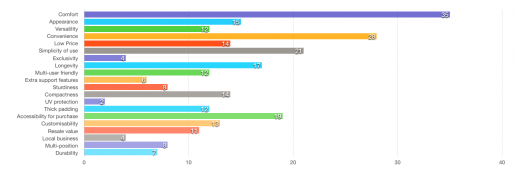
This is why one “size does not fit all” and why many of us in the sling world use an analogy of shoe fitting, jeans or wedding dresses when it comes to trying a carrier. Everyone ends up with something difference. Cheap shoes bought over the internet often don’t fit your feet and can cause blisters. Jimmy Choos, Louboutins or Doc Martens really do not work for everyone, however desirable or pretty or cool they may be. What works for your friend, or for a large number of enthusiastic sling owners on the internet, or an experienced sling professional may not work for you. Current trends or famous brands don’t equate to an instant “perfect fit” and no one carrier can claim to be “the ultimate” or “the best.”
Trying a few things out before you commit yourself to a purchase that can feel expensive is very useful, and it is often worth spending more on a good quality carrier that fits you well, to ensure you and your baby are both comfortable and that it will last for some time. Many people find, however, once they have the right sling, it gets used daily, and the cost per use per day comes down to pence. Don’t be tempted to buy an extremely cheap carrier that may well be a fake (Ergobaby is the best known carrier to have been counterfeited) – always ask for proof of purchase from an authorised retailer when buying second hand. Your child’s safety isn’t worth the risk. Buyer beware!
Once you’ve recognised the benefits of carrying as comfortably as possible, how do you begin to choose?
I highly recommend visiting your local sling library to try out several options; there will be someone there with training and experience to help you navigate the choices. Some people will have a “shopping list” of requirements for their ideal carrier, based on what they have read online or been advocated by a friend or an internet group. Of course, such recommendations can be helpful, but a one-size-fits-all approach rarely works in practice. Every baby-parent dyad is unique, with their own personal stories that influence how they stand, how they carry, how they prefer to be held, for example, and particular features that seemed desirable on paper may not feel quite right in person. If you think your other half is likely to carry too, do bring them along to try things themselves; it is very hard to guess what will work.
For example, some people will love the feel of thicker, more padded waistbands, while others will find them bulky and restrictive. Some will prefer straps that cross over, others find this can ride up to the neck. Some find rucksack style straps hard to do up. Some inserts are simple to use, others more complex, many don’t like inserts at all. Some people find meh dais and woven wraps more comfortable than carriers. It is generally a good idea to have an open mind; you may be surprised to find some things work much better than you had imagined, while others just don’t feel quite right.
Bulky carriers may not necessarily equal greater support or comfort for everyone, and too much bulk can be unhelpful for some. Knowing how to achieve good positioning and how high and tight to have a carrier are very effective tools for successfully distributing weight comfortably.
A good sling librarian or peer supporter will be able to show you how to position your child, as well as tips and tricks that can make things much easier (such as how to put on fiddly straps, or how to make sure your stretchy wrap is tight enough, or how to ensure your ring sling feels secure). Sling libraries are fantastic resources.
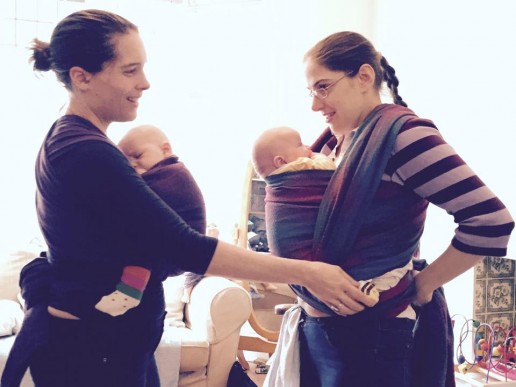

It is worth being aware that knowledge about sling safety and best practice positioning is improving all the time. Older carriers and older brands may have instructions that are no longer part of current safety guidelines; social media is often marketing focused and wildly inaccurate, feeding and sleeping positions in slings are often out of date. Do check with your local sling professional if you have any concerns at all, they will be only too pleased to support you and your child.
Your sling should bring you and your child great enjoyment and should not cause you pain or be uncomfortable. Furthermore, as a family’s familiarity with slings grows and as their baby gets bigger, their choices can change. They may move from things that are especially designed for small babies, or carriers that are as simple as can be, on to things that they find increasingly versatile and comfortable. Babies may wish to change how they are carried, desiring greater visibility, for example. Each parent may have different shapes too, and families may decide to have different carriers for different situations (eg a simple buckled carrier for use on a school run or on a muddy day, or a woven wrap for a long sleep-inducing walk, for example). There are no “perfect” answers, but options that end up being the best choice for the circumstances.


